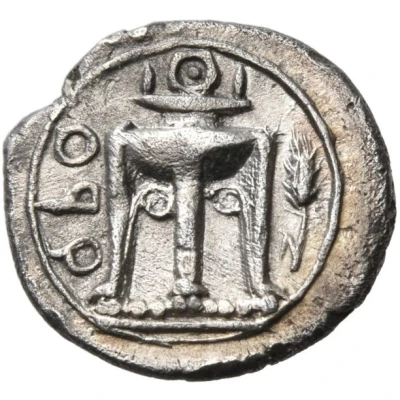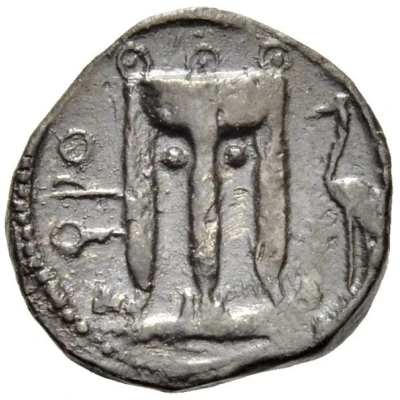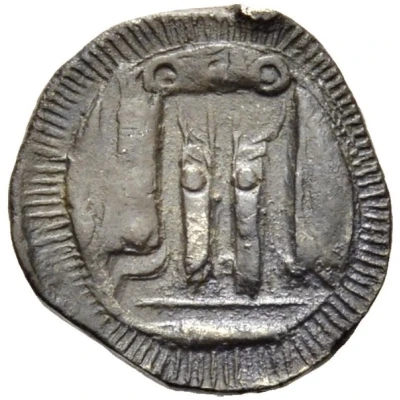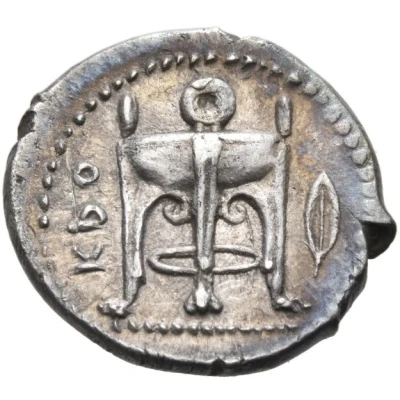
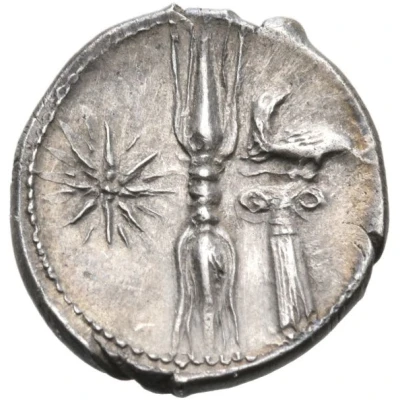

© Nomos AG
Triobol 400 BC - 350 BC
| Silver | 1.19 g | 13 mm |
| Issuer | Kroton (Bruttium) |
|---|---|
| Type | Standard circulation coin |
| Years | 400 BC - 350 BC |
| Value | Triobol (½) |
| Currency | Achaean drachm |
| Composition | Silver |
| Weight | 1.19 g |
| Diameter | 13 mm |
| Shape | Round (irregular) |
| Technique | Hammered |
| Orientation | Variable alignment ↺ |
| Demonetized | Yes |
| Updated | 2024-10-09 |
| Numista | N#396434 |
|---|---|
| Rarity index | 100% |
Reverse
Upright thunderbolt; in field to left, star of sixteen rays; in the field to right, eagle standing left, on a column with a Corinthian capital, his head turned back to right; border of dots.
Interesting fact
The Triobol coin was used as a form of currency in the ancient Greek city of Kroton, which is now known as Crotone, in southern Italy. The coin features the image of a mythical creature called a "Triton," which is a half-human, half-fish creature that was believed to inhabit the sea. The Triton is depicted on the coin holding a trident, which was a symbol of power and authority in ancient Greek mythology. The coin's design was meant to signify the city's connection to the sea and its importance as a trading hub.
Price
| Date | Mintage | VG | F | VF | XF | AU | UNC |
|---|---|---|---|---|---|---|---|
| ND (400 BC - 350 BC) | - | - | - | - | - | - |
Values in the table are based on evaluations by sales realized on Internet platforms. They serve as an indication only for Triobol (400 BC - 350 BC) coin.
